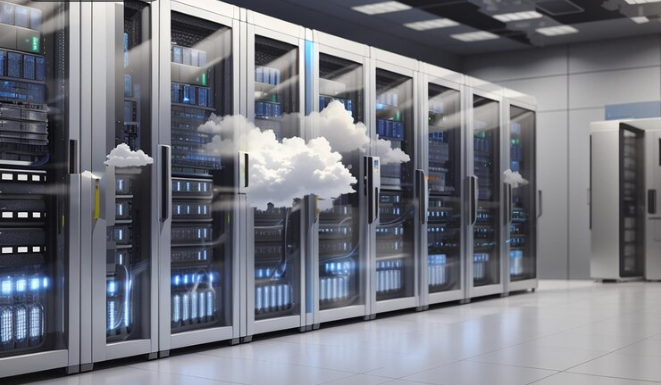Setting up a Network Attached Storage (NAS) system is pivotal for enterprises aiming to enhance their data management processes. Whether your business is a small startup or a large corporation, a well-configured NAS can significantly boost file accessibility, simplify backup procedures, and reinforce data security. In this post, we'll share essential tips for hardware selection and network configuration, helping you create an efficient enterprise NAS system.
Understanding Your Storage Needs
Start by analyzing your storage needs. Consider the types of data you will store and how often you need to access it. Different businesses require different configurations based on size, performance, and budget.
For example, a media production company dealing with large video files might need high-capacity drives with fast read/write speeds. On the other hand, a consultancy firm handling mostly Word documents may suffice with basic configurations. Understanding your specific needs will guide you in making the right choices.
Selecting the Right Hardware
1. NAS Device
Selecting the right NAS device is the foundation of your setup. Look for enterprise-grade systems that can scale as your business grows.
Evaluate these features:
Processing Power: A robust CPU can handle numerous users and applications at once. For instance, a quad-core processor can support multiple simultaneous data streams without lag.
RAM: Aim for a minimum of 8 GB of RAM for better performance, especially if applications run directly from the NAS.
Drive Bays: Ensure your device has enough drive bays to accommodate both current and future data needs. For example, a system with 8 drive bays allows for expansion without needing to replace the unit.
Redundancy: Look for features like dual power supplies and RAID configurations to protect data against hardware failures. RAID 5 is commonly used as it provides a good balance between performance and redundancy.
2. Hard Drives
After selecting your NAS device, it is time to choose the hard drives. You can choose between two primary types:
HDD (Hard Disk Drive): Generally more affordable and available in larger capacities, making them excellent for storing large amounts of data. For instance, a 12 TB HDD can often be found for around $300.
SSD (Solid State Drive): A pricier option but offers speed and improved performance, important for tasks like database applications. SSDs can improve data access speeds by as much as 200-300% compared to traditional HDDs.
Consider a hybrid approach where you use SSDs for critical applications and HDDs for bulk storage of less frequently accessed files.
Setting Up Your Network
1. Network Infrastructure
The effectiveness of your NAS system ties directly to the quality of the network it operates on. Consider these components:
Router: Invest in a high-quality router with gigabit capabilities to minimize data transfer delays that can hinder performance.
Switch: A managed switch that supports VLANs and link aggregation is beneficial in larger enterprises where many users and devices are active.
Cabling: Use CAT 6 Ethernet cables for optimal data transfer speeds. This can achieve speeds of up to 10 Gbps, ensuring seamless performance.
2. IP Address Management
Assigning static IP addresses to your NAS can greatly reduce connectivity issues. This allows stable communication over the network, making backup scripts and Mapped Network Drives efficient. Document each device's IP address alongside its user for easy future reference.
Configuring Your NAS
1. Operating System and Applications
Once your hardware is set up, install the NAS's official operating system and routinely check for firmware updates. Most enterprise NAS units come pre-loaded with software packages designed for file management and backup.
Explore applications that align with your enterprise needs. For example, using Nextcloud for secure file sharing or Veeam for backup can enhance functionality dramatically.
2. User Permissions
To bolster security, establish user permissions. Create access control lists (ACLs) allowing users access only to the files they need. This not only protects sensitive information but also enhances NAS performance by reducing unnecessary file access.
Backup Solutions
1. Implement Redundancy
Always maintain backups of your NAS to a different location. This can include a second NAS device or a cloud storage service. A proven strategy is the 3-2-1 backup strategy: keep three copies of your data on two different types of hardware, with one copy stored off-site.
Regularly test your backups to confirm data integrity and availability. This process can help prevent critical downtime in situations involving hardware failure or data loss.
2. Regular Maintenance
Establish a comprehensive maintenance schedule, which should cover:
Firmware Updates: Keep your NAS operating system and firmware current to enhance performance and security.
Drive Health: Use built-in diagnostic tools or third-party applications to monitor hard drive health. Get alerts when drives show signs of failure, ensuring timely replacements.
Performance Checks: Conduct regular performance assessments to identify bottlenecks and take action to alleviate them before they impact operations.
Final Thoughts
Setting up an enterprise NAS system requires careful planning and consideration of factors ranging from hardware selection to network configuration. By thoroughly assessing your storage requirements, choosing the appropriate devices, establishing a secure network, and implementing effective backup strategies, you can create a highly efficient NAS environment.
Stay proactive in addressing potential issues through consistent maintenance and regular reviews of your setup. With these essential NAS system setup tips, your enterprise can enjoy increased productivity and improved data management capabilities, all while maintaining robust security.
